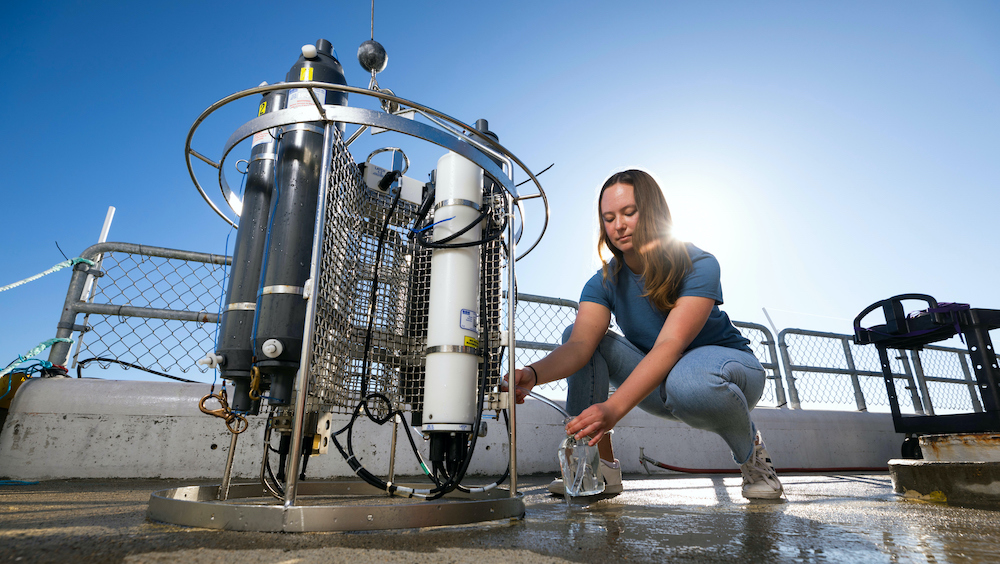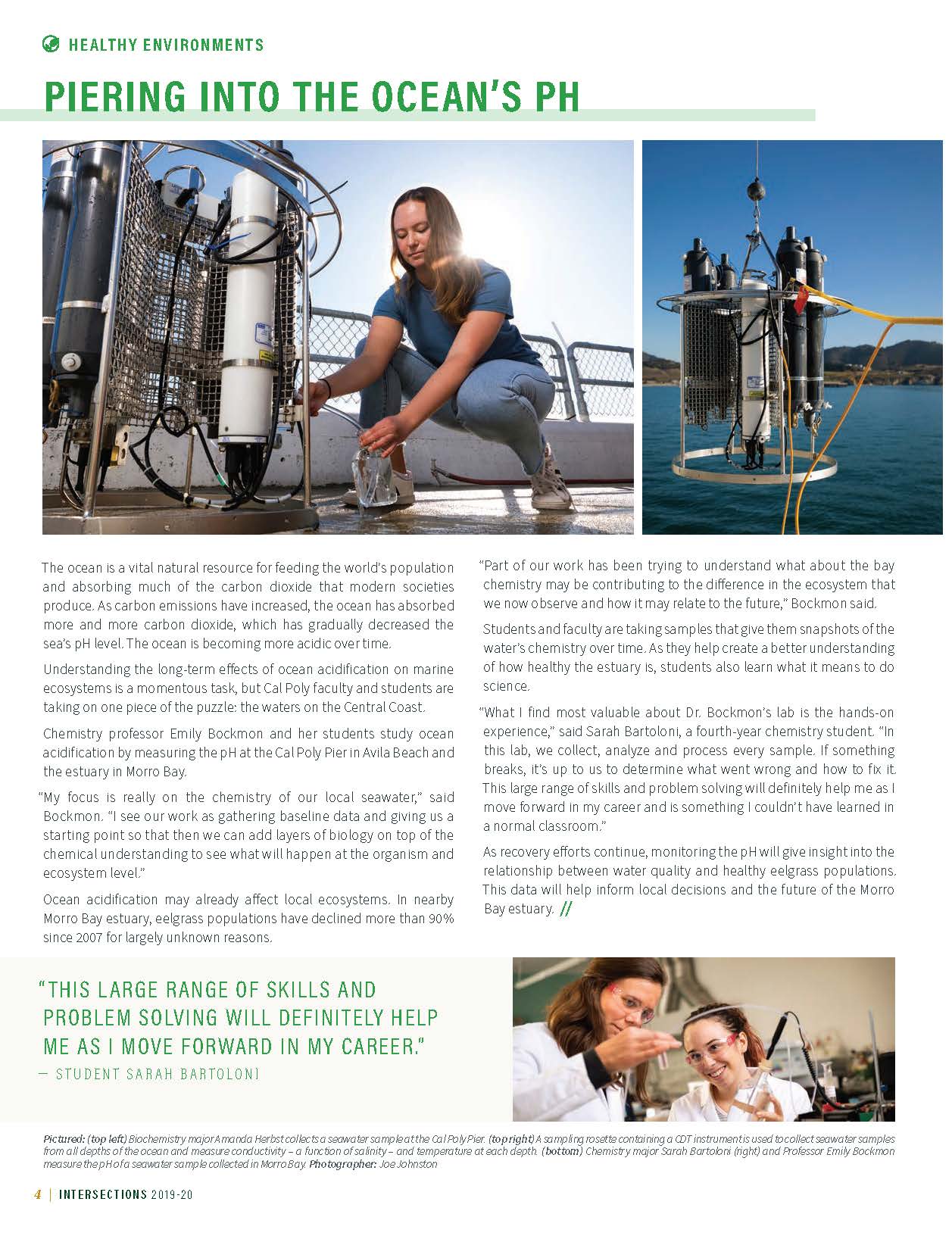Piering into the Ocean’s pH
 The ocean is a vital natural resource for feeding the world’s population and absorbing much of the carbon dioxide that modern societies produce. As carbon emissions have increased, the ocean has absorbed more and more carbon dioxide, which has gradually decreased the sea’s pH level. The ocean is becoming more acidic over time.
The ocean is a vital natural resource for feeding the world’s population and absorbing much of the carbon dioxide that modern societies produce. As carbon emissions have increased, the ocean has absorbed more and more carbon dioxide, which has gradually decreased the sea’s pH level. The ocean is becoming more acidic over time.
Understanding the long-term effects of ocean acidification on marine ecosystems is a momentous task, but Cal Poly faculty and students are taking on one piece of the puzzle: the waters on the Central Coast.

Chemistry professor Emily Bockmon (right) and
a student testing water samples in the lab.
Chemistry professor Emily Bockmon and her students study ocean acidification by measuring the pH at the Cal Poly Pier in Avila Beach and the estuary in Morro Bay.
“My focus is really on the chemistry of our local seawater,” said Bockmon. “I see our work as gathering baseline data and giving us a starting point so that then we can add layers of biology on top of the chemical understanding to see what will happen at the organism and ecosystem level.”
Ocean acidification may already affect local ecosystems. In nearby Morro Bay estuary, eelgrass populations have declined more than 90% since 2007 for largely unknown reasons.
“Part of our work has been trying to understand what about the bay chemistry may be contributing to the difference in the ecosystem that we now observe and how it may relate to the future,” Bockmon said.
THIS LARGE RANGE OF SKILLS AND PROBLEM SOLVING WILL DEFINITELY HELP ME AS I MOVE FORWARD IN MY CAREER.
—Sarah Bartoloni
Students and faculty are taking samples that give them snapshots of the water’s chemistry over time. As they help create a better understanding of how healthy the estuary is, students also learn what it means to do science.
“What I find most valuable about Dr. Bockmon’s lab is the hands-on experience,” said Sarah Bartoloni, a fourth-year chemistry student. “In this lab, we collect, analyze and process every sample. If something breaks, it’s up to us to determine what went wrong and how to fix it. This large range of skills and problem solving will definitely help me as I move forward in my career and is something I couldn’t have learned in a normal classroom.”
As recovery efforts continue, monitoring the pH will give insight into the relationship between water quality and healthy eelgrass populations. This data will help inform local decisions and the future of the Morro Bay estuary.
Read more about Healthy Environments in Return of the Pismo Clams, Are You Thinking Big Enough? and Harnessing the sun to cook—and cool—in Africa





